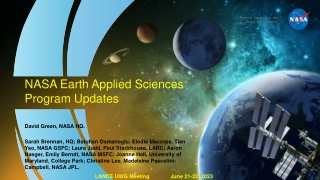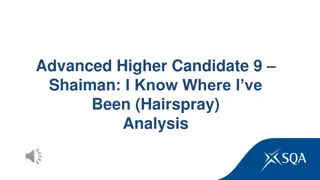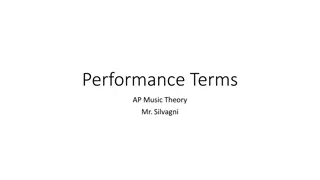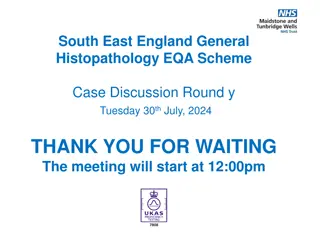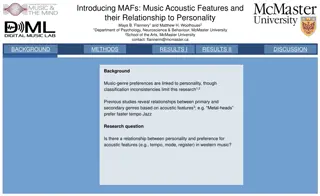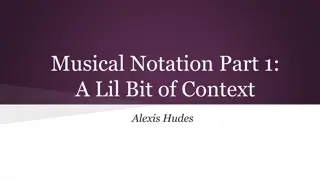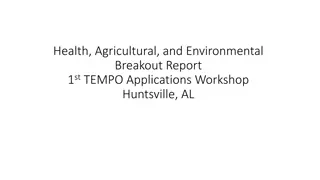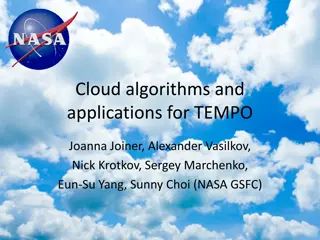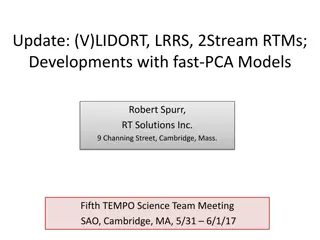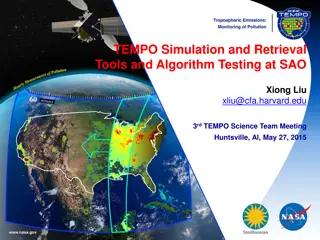
Leveraging Satellite Observations for NO2 Concentration Inference
Explore how advanced algorithms and high-resolution satellite data are improving the accuracy of inferring ground-level NO2 concentrations from satellite observations. Learn about the latest research findings and the benefits of using updated methods with satellite-informed data for more precise estimates.
Download Presentation

Please find below an Image/Link to download the presentation.
The content on the website is provided AS IS for your information and personal use only. It may not be sold, licensed, or shared on other websites without obtaining consent from the author. If you encounter any issues during the download, it is possible that the publisher has removed the file from their server.
You are allowed to download the files provided on this website for personal or commercial use, subject to the condition that they are used lawfully. All files are the property of their respective owners.
The content on the website is provided AS IS for your information and personal use only. It may not be sold, licensed, or shared on other websites without obtaining consent from the author.
E N D
Presentation Transcript
Inferring surface-level NO2 concentrations from satellite column observations Matt Cooper, Randall Martin, Chris McLinden, Jeffrey Brook TEMPO Virtual Meeting August 2020 1
Past ground-level NO2 estimates were biased low, hampered by coarse satellite resolution and algorithmic assumptions 0.1 x0.1 OMI (Lamsal et al. 2010) (Kharol et al., 2015) ? ???? ??????? ??? ???????? ????? ? ???= ? From satellite column From CTM Satellite-inferred Surface NO2 (ppbv) Matt Cooper, TEMPO Meeting August 2020
Updated algorithm improves accuracy in OMI estimates Satellite-informed mixing assumptions Cooper et al. 2020, doi: 10.1088/1748-9326/aba3a5 ~ 10 x 10 km2 OMI-Inferred NO2 2019 ? ???? ??????? ??? ???????? ????? ? ???= ? ? Ground-level NO2 (ppbv) ?? ?< 1015 ????? ??2 1 1 ? + ?? ?? 1015< ?< 10?1015 ? ?? ?> 10?1015 ? = OMI-Inferred NO2 (ppbv) y = 1.01 x - 0.13 r=0.59 RMSE = 3.36 Ground Monitor NO2 (ppbv) Matt Cooper, TEMPO Meeting August 2020
Fine-resolution estimates using TROPOMI improve precision ~ 1x1 km2 TROPOMI-Inferred NO2 2019 TROPOMI resolution ~ 3.5 x 5.5 km2 Higher resolution observations means More accurate estimates High resolution spatial structure Less noise Ground-level NO2 (ppbv) TROPOMI-Inferred NO2 (ppbv) y = 0.92 x + 0.02 r=0.66 RMSE=2.75 Ground Monitor NO2 (ppbv) Matt Cooper, TEMPO Meeting August 2020
Taking advantages of high-resolution observations ~ 1km resolution maps from a 50 km (or coarser) resolution model! Updated algorithm lets satellite column inform profile shape Means less sensitivity to model resolution Higher-resolution satellite information useful even if model resolution lags TROPOMI-Inferred New algorithm Original algorithm NO2 (ppbv) Ground Monitor NO2 (ppbv) Matt Cooper, TEMPO Meeting August 2020
New algorithm better leverages high-res observations: opportunity for TEMPO ~ 10x10 km2 OMI-Inferred NO2 2019 (Lamsal et al 2010 algorithm) ~ 1x1 km2 TROPOMI-Inferred NO2 2019 (Cooper et al. 2020 algorithm) Ground-level NO2 (ppbv) Matt Cooper, TEMPO Meeting August 2020



